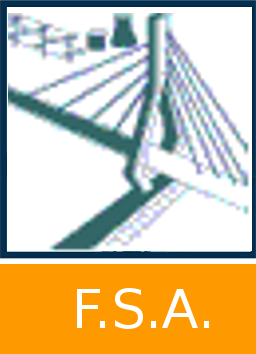Master thesis and internship[BR]- Master's thesis : Application and calibration of a viscous throughflow model to axial flow compressor blades subject to geometric variability[BR]- Integration Internship
Dufour, Camille 
Promotor(s) :
Hillewaert, Koen 
Date of defense : 5-Sep-2022/6-Sep-2022 • Permalink : http://hdl.handle.net/2268.2/16475
Details
| Title : | Master thesis and internship[BR]- Master's thesis : Application and calibration of a viscous throughflow model to axial flow compressor blades subject to geometric variability[BR]- Integration Internship |
| Author : | Dufour, Camille 
|
| Date of defense : | 5-Sep-2022/6-Sep-2022 |
| Advisor(s) : | Hillewaert, Koen 
|
| Committee's member(s) : | Budo, Arnaud 
Terrapon, Vincent 
Bartholet, Jules Schmetz, Gaël |
| Language : | English |
| Number of pages : | 86 |
| Keywords : | [en] Throughflow model [en] Correlation [en] Deviation angle [en] Profile loss [en] Optimal incidence |
| Discipline(s) : | Engineering, computing & technology > Aerospace & aeronautics engineering |
| Target public : | Professionals of domain |
| Institution(s) : | Université de Liège, Liège, Belgique |
| Degree: | Master en ingénieur civil en aérospatiale, à finalité spécialisée en "aerospace engineering" |
| Faculty: | Master thesis of the Faculté des Sciences appliquées |
Abstract
[en] This study presents the assessment of a viscous throughflow model applied to high subsonic
flow for two modern compressors designed by Safran Aero Boosters. Blades forces
terms resulting from the averaging of the Navier-Stokes equations are computed using
correlations from the literature. In particular, the optimal incidence angle, the profile loss
and the deviation angle are estimated with empirical models. However, these correlations
are not adapted for modern blade geometries and high Mach number flows. Therefore, the
first aim of this work has been to assess the validity of the correlation predictions using a
blade-to-blade approach. The three correlations have been investigated separately. The
comparisons between the correlation predictions and the results of the cascade simulations
used as reference revealed the necessity to calibrate the correlations.
As a result of this observation, the optimal incidence angle is first corrected by adding a
correction factor. The predictions for the profile losses are accurate for the two compressors
once the angle of incidence is corrected. This study mainly focuses on the calibration
of the deviation angle. Three strategies are investigated to calibrate the deviation angle
correlation. The first calibration tunes the empirical coefficients of the correlation via an
algorithm. The second calibration revises the terms included in the correlation and adds
a contribution. These two strategies prove successful. The third method, based on a genetic
algorithm, attempts to generate a polynomial function depending on the geometric
parameters to characterise the deflection angle. This third method still needs to be tuned
for a higher number of cases.
The first two calibrated correlations are implemented in the throughflow model, and the
resulting performance maps are analysed by comparison with higher-fidelity results. The
modified correlations yield significant improvements in performance predictions.
A sensibility analysis is finally carried out based on the stagger angle variability. The
comparison with higher-fidelity results demonstrates the validity and reliability of the
throughflow model with the two enhanced correlations.
File(s)
Document(s)

 Master_Thesis_Dufour.pdf
Master_Thesis_Dufour.pdf
Description:
Size: 4.78 MB
Format: Adobe PDF

 Erratum_Master_Thesis_Dufour.pdf
Erratum_Master_Thesis_Dufour.pdf
Description: -
Size: 4.84 MB
Format: Adobe PDF
Cite this master thesis
The University of Liège does not guarantee the scientific quality of these students' works or the accuracy of all the information they contain.


 Master Thesis Online
Master Thesis Online




